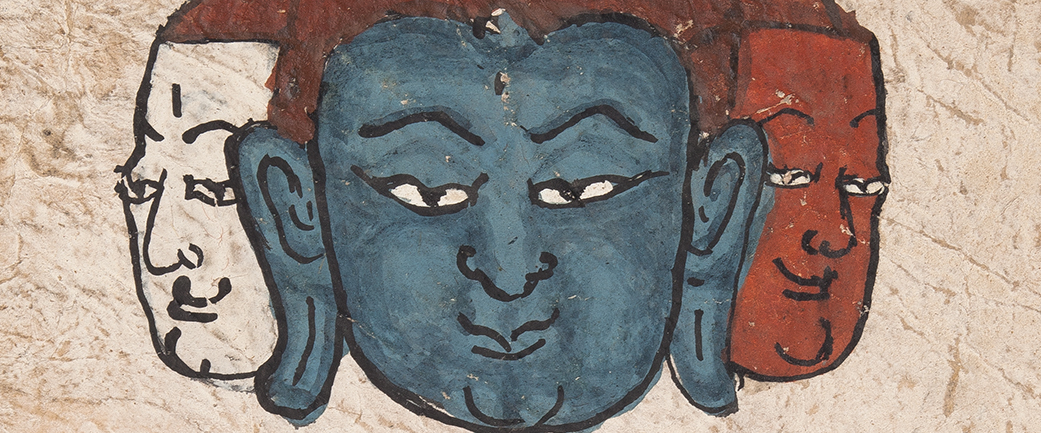
Ritual ceremonies guide us on the path to enlightenment
In Tibetan Vajrayana Buddhism the process of awakening begins when we receive an empowerment from a qualified meditation master. The empowerment ceremony is a grand ritual to introduce us to our own innermost Buddha qualities, which the most sophisticated philosophical tenets of Tibetan Vajrayana Buddhism call Buddha Nature. Within our individual, wild, untamed mind exists the inherent potential to awaken as a buddha, liberated from our sufferings and fully capable of helping all beings pacify their own sufferings and develop the great qualities of love, compassion, patience, equanimity, and omniscient wisdom that we all have deep within. Buddha accomplished this awakening over 2,500 years ago under the Bodhi Tree, and his methods have been passed down from teacher to disciple in an unbroken lineage until the present. Great spiritual teachers still live among us, and we can connect with them.
To start this process, we should seek out a lama, a spiritual teacher, who holds the unbroken lineage and has manifested the signs and qualities of deep spiritual realization. The lama should be firmly devoted to assisting disciples, not merely using them for self-centered, short-term goals. We have to do some research and look closely. The traditional texts always tell us to choose a teacher carefully””likewise, the teacher has to investigate the qualities of the student. Once we feel we can trust a lama, we can receive an empowerment.
During the empowerment ceremony, we take the vows of refuge and bodhicitta. When we “take refuge,” we vow to put our faith and trust in the lama, the Buddha, the teachings of the Buddha known as the Dharma, and the community of Buddhist practitioners called the sangha, and we pledge to practice meditation and live in accord with Buddhist principles. When we take the bodhicitta vow, we promise not to harm other living beings, and we vow to become enlightened so that we can swiftly help all beings become free of suffering and also attain enlightenment.
In an empowerment ritual, as the lama introduces us to our pure Buddha qualities, we promise to see the world and living beings as sacred. Due to our self-clinging and deeply entrenched habits, seeing the world and all beings in this way is hard to do, so we promise to embark on the path of meditation, which the empowerment from the lama has authorized us to practice. Even when times are tough, we remember that we have a sacred commitment, called samaya, with the teacher, so we must not give up. In this way, the lama has empowered us with a skillful meditation method to combat our usual tendency for indolence, ignorance, and selfishness. Furthermore, through continued and consistent meditation practice, our experience of suffering will diminish and positive qualities will manifest.
The lamas tell us that there will come a time when, due to our effort in meditation, our sacred outlook will become stable and uncontrived. We will effortlessly see the world as a pure land and all beings as perfect buddhas, and our mind will be filled with love and compassion for all. At that moment the empowerment we initially received from the external lama will have come to fruition, and our inner power will expand, making us self-empowered and capable of providing refuge and inspiration to others. It is possible for this awakening to happen very quickly, but for most of us it takes diligent effort applied over a long time, combined with continued guidance from our spiritual teachers.
Having had the good fortune to receive hundreds of empowerments from scores of authentic lamas, I feel confident that if one sincerely follows this path, it will yield a meaningful use of one’s precious human life. There are many proven meditation methods that can completely unravel and pacify our neurotic minds and fill us with love and compassion for all. This possibility should give us a sense of hope.
About the Contributor
Scott Globus grew up in New Jersey and settled in the San Francisco Bay Area in the mid-1980s after graduating from MIT. He began practicing Tibetan Buddhist meditation under the guidance of Venerable Gyatrul Rinpoche at Orgyen Dorje Den in 1990. Scott has been fortunate to receive teachings and empowerments from many accomplished meditation masters. He served as president of Orgyen Dorje Den for over twenty years and in 2018 started offering introductory meditation classes.


